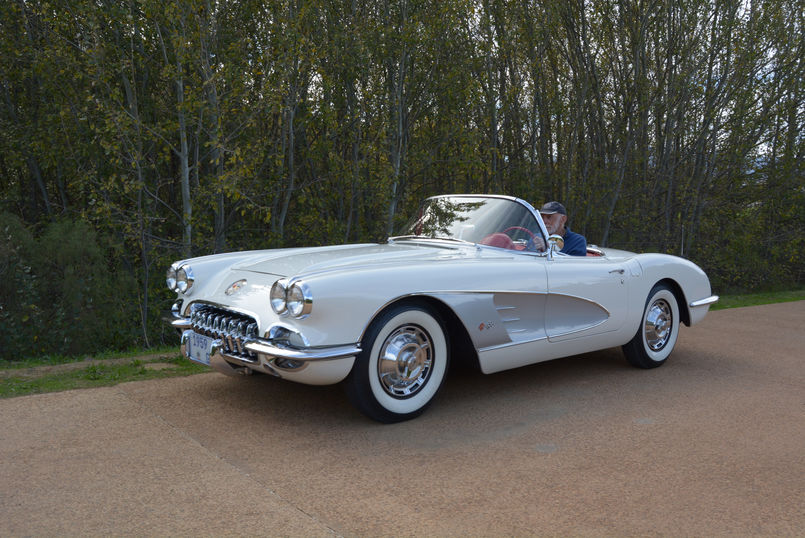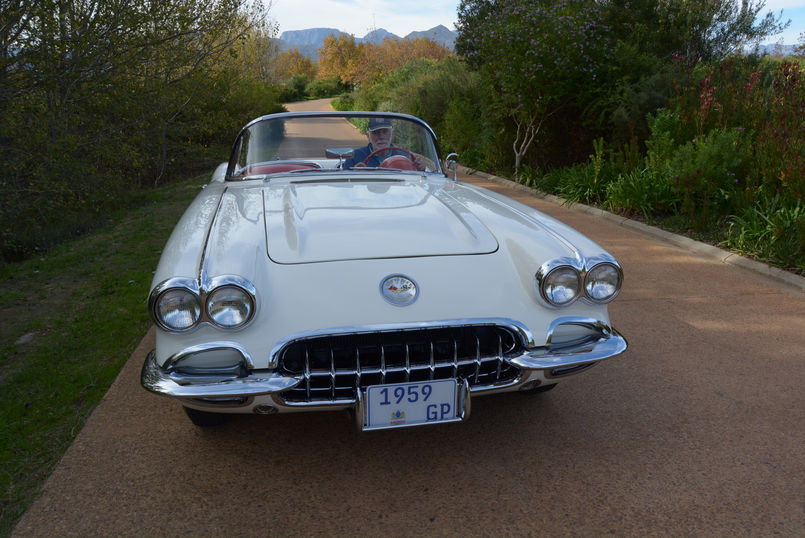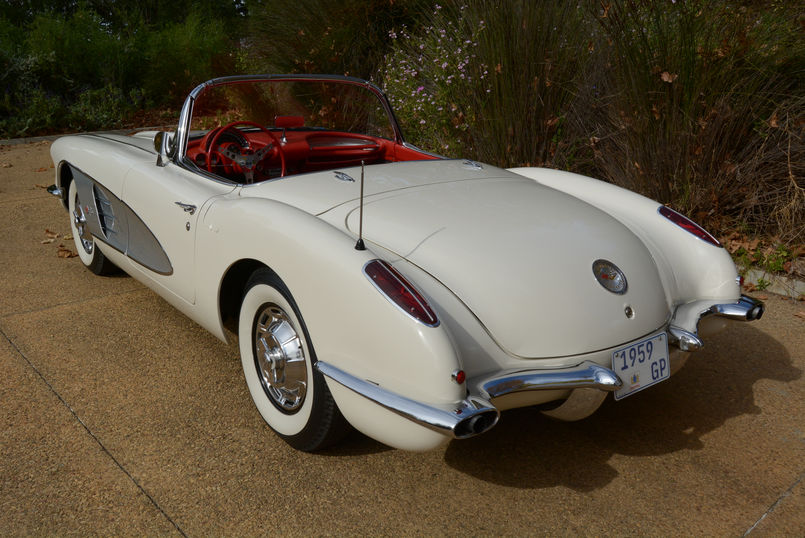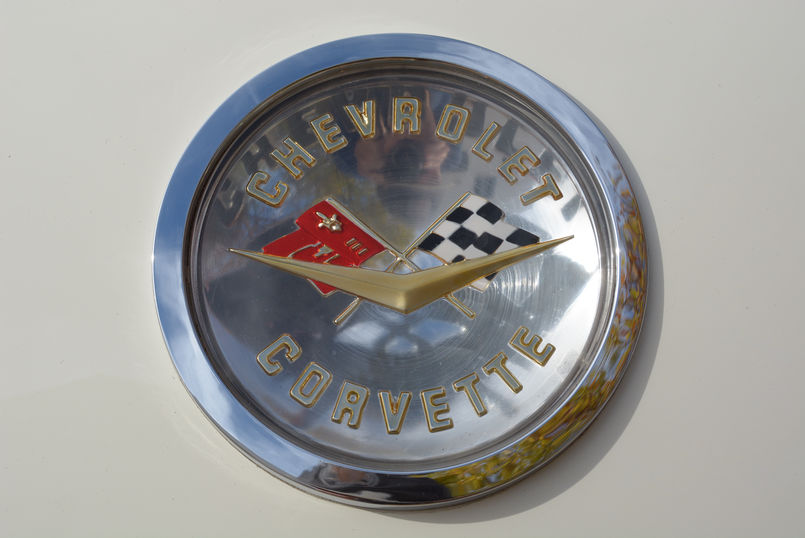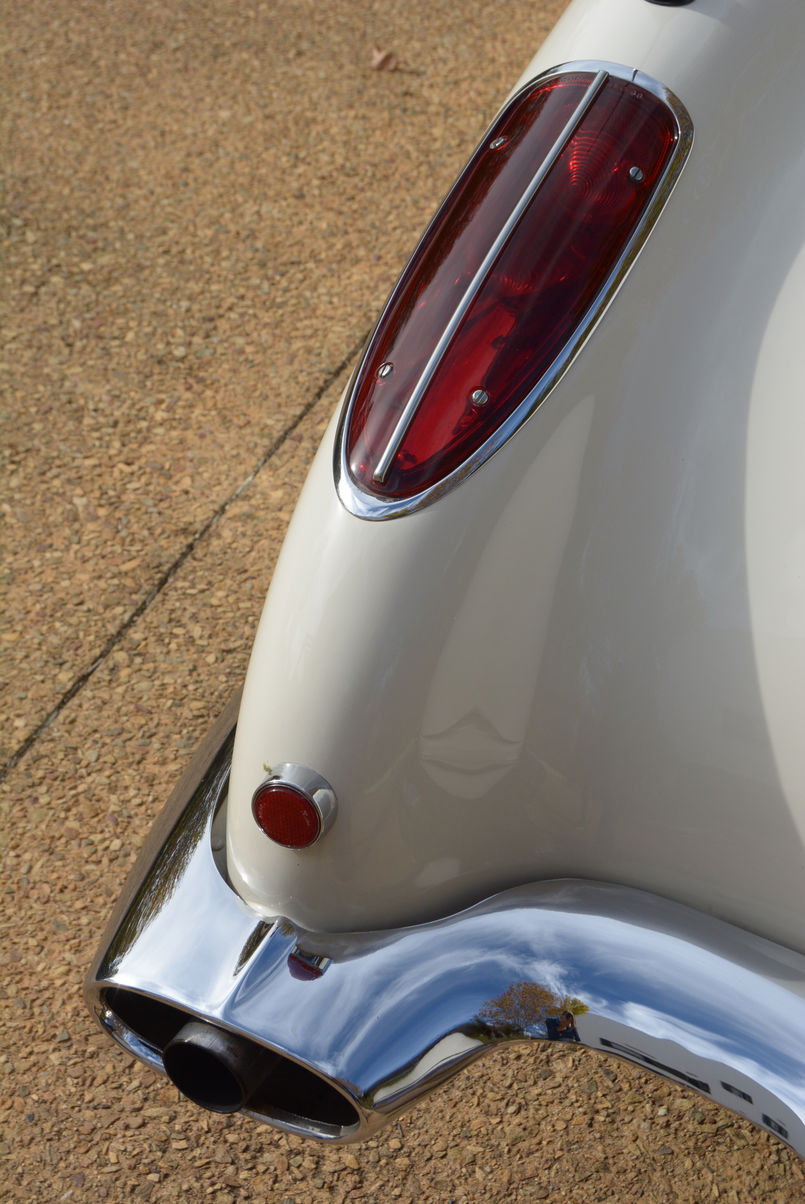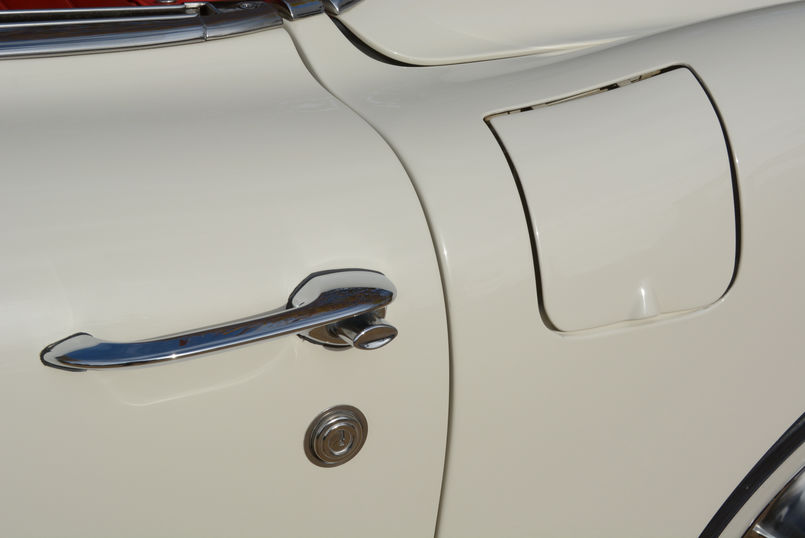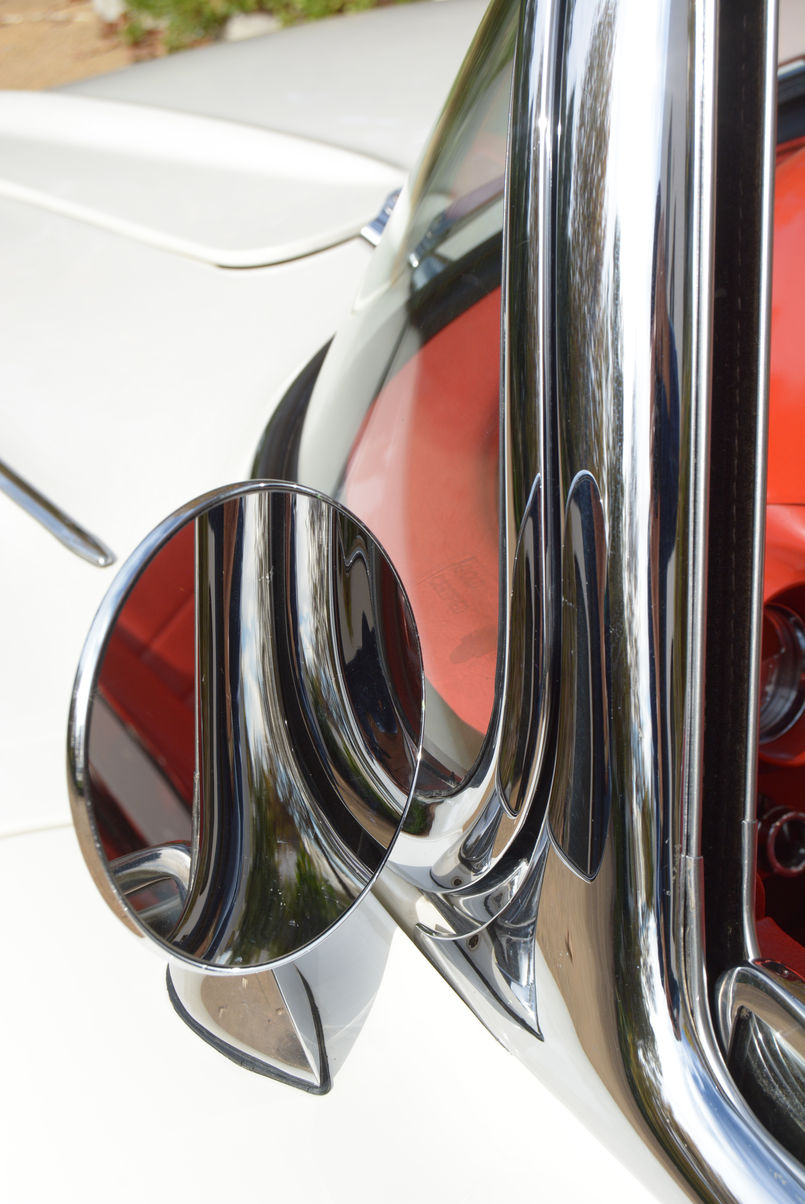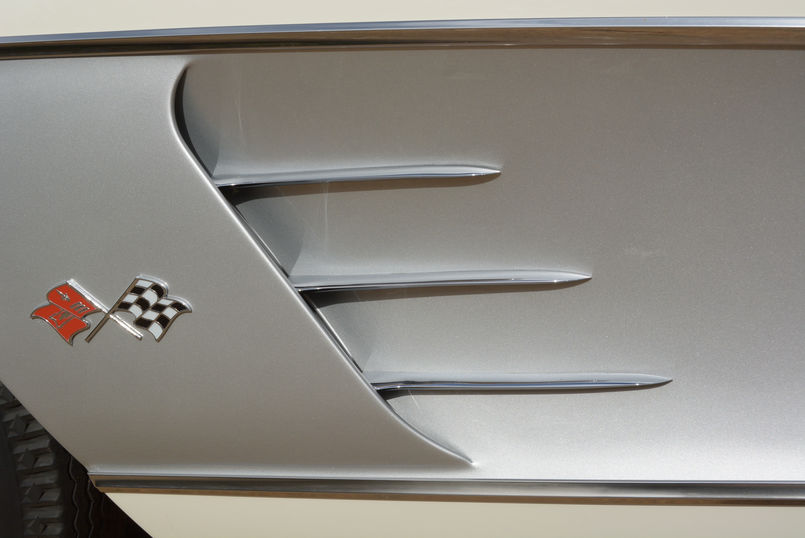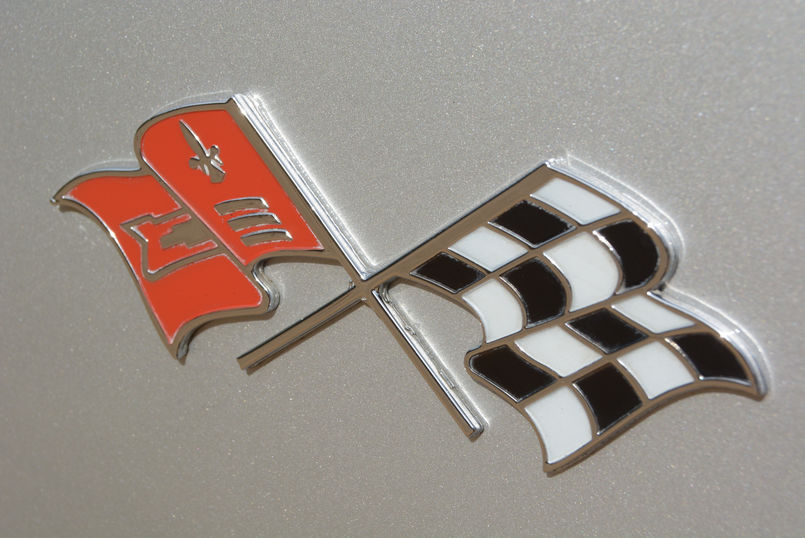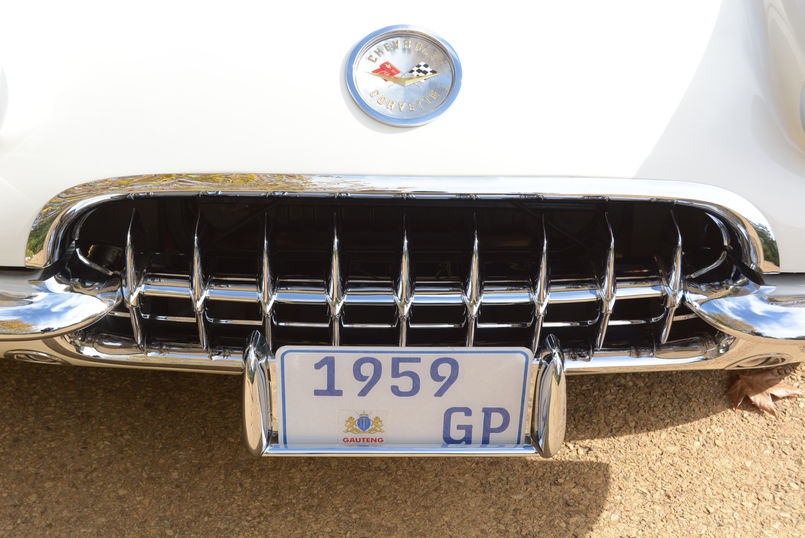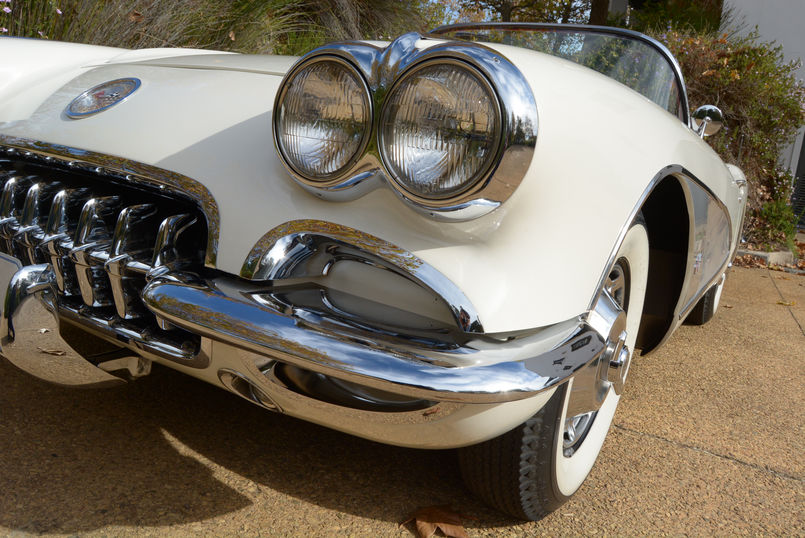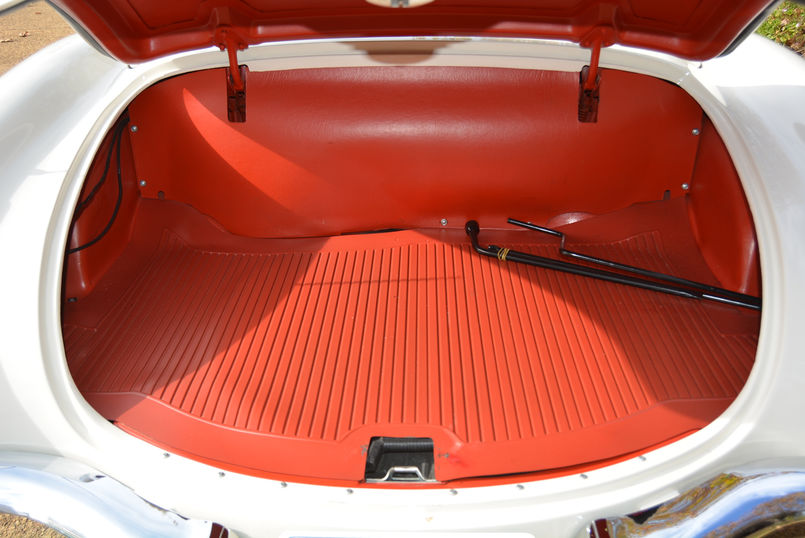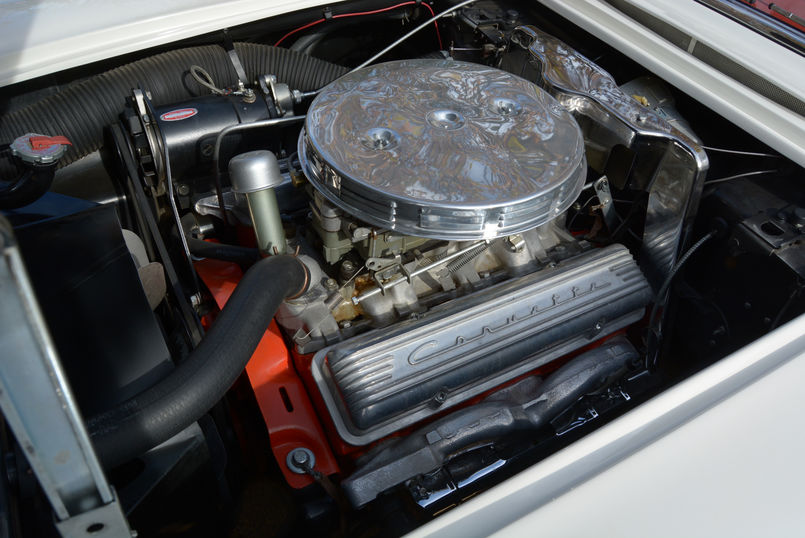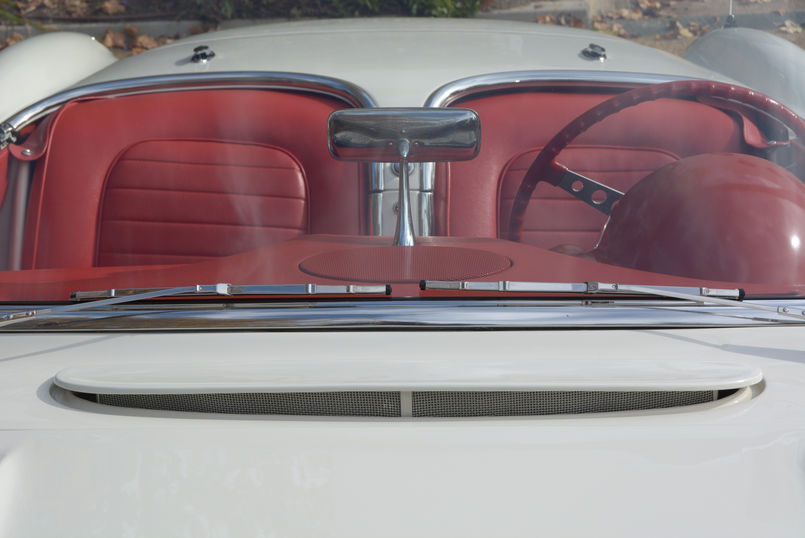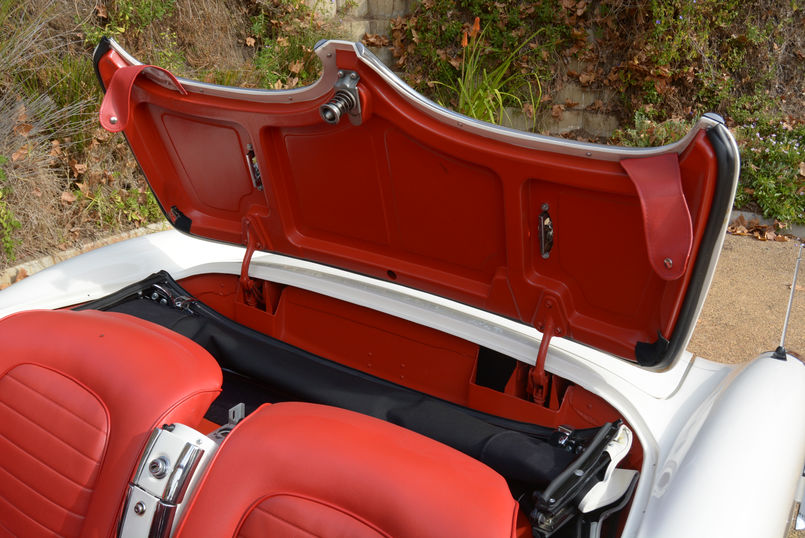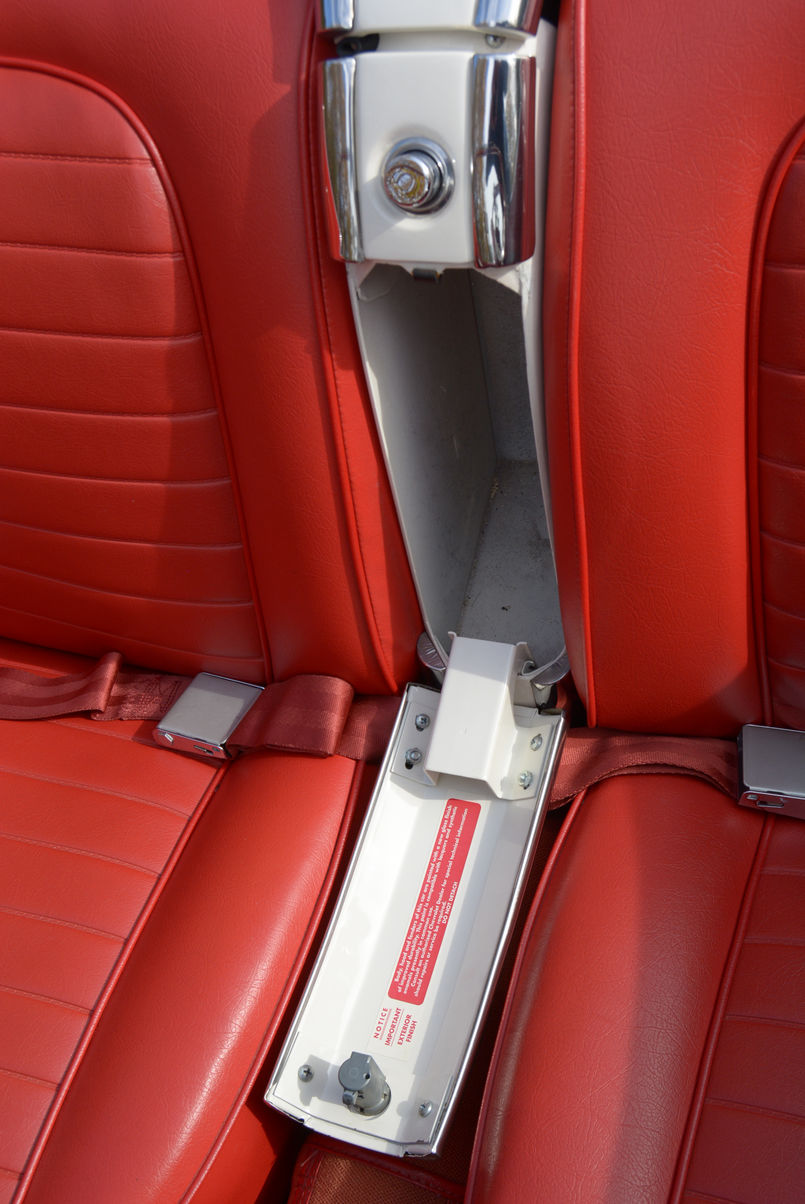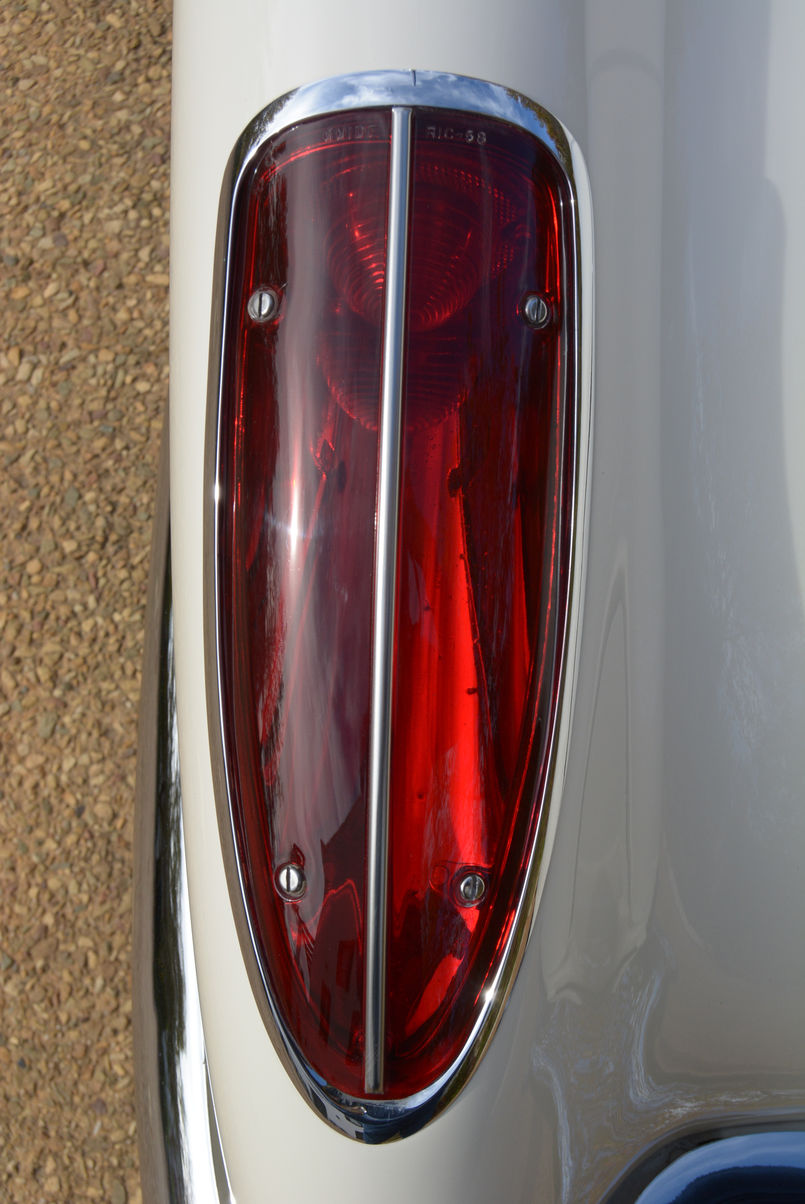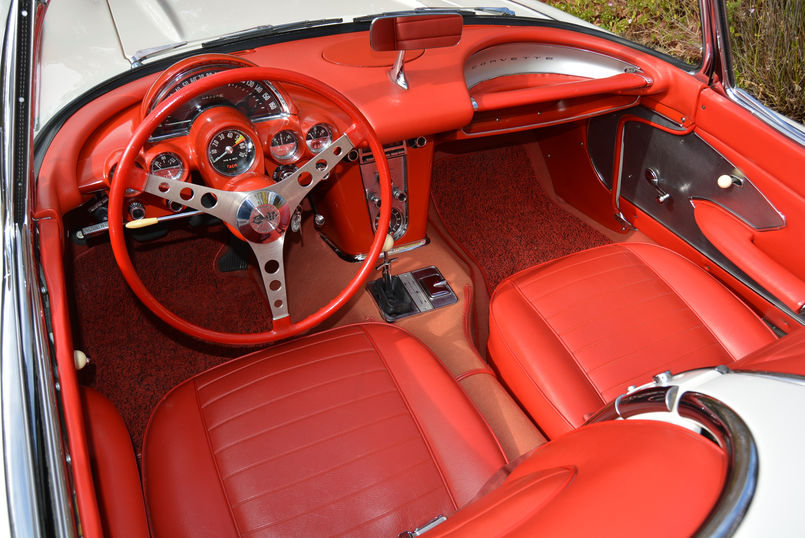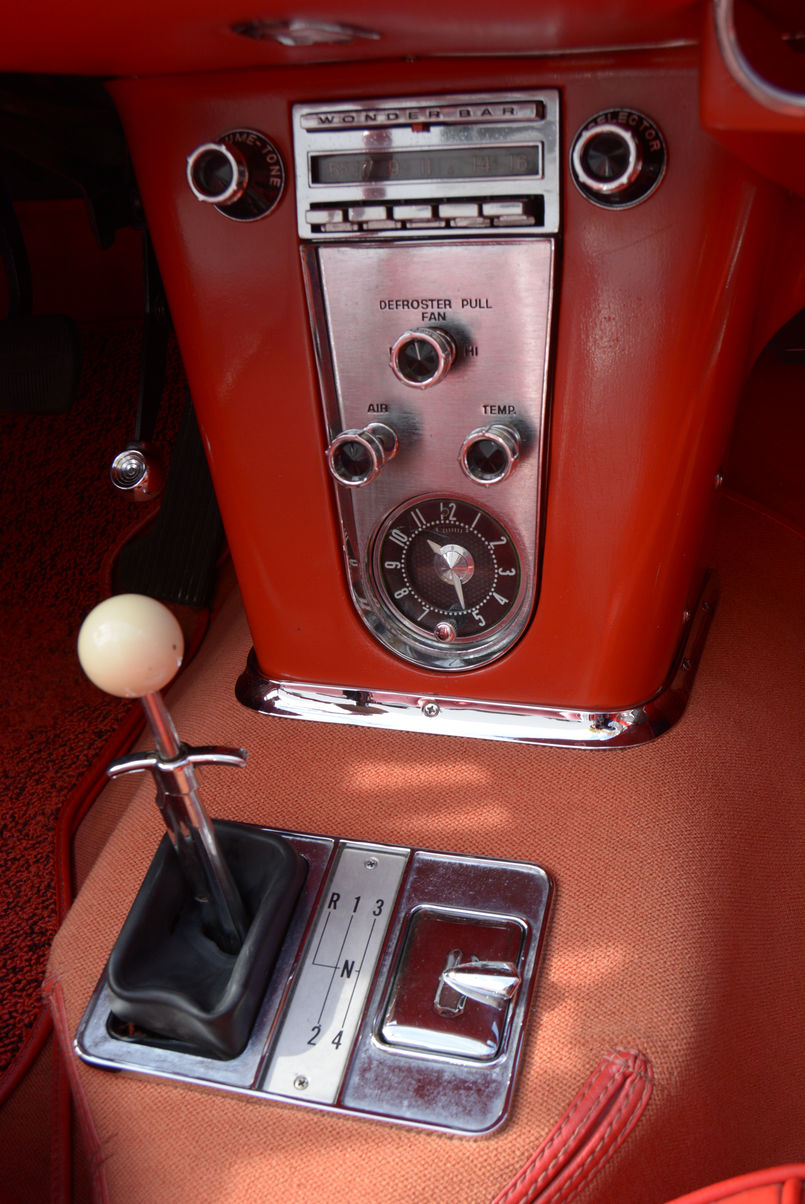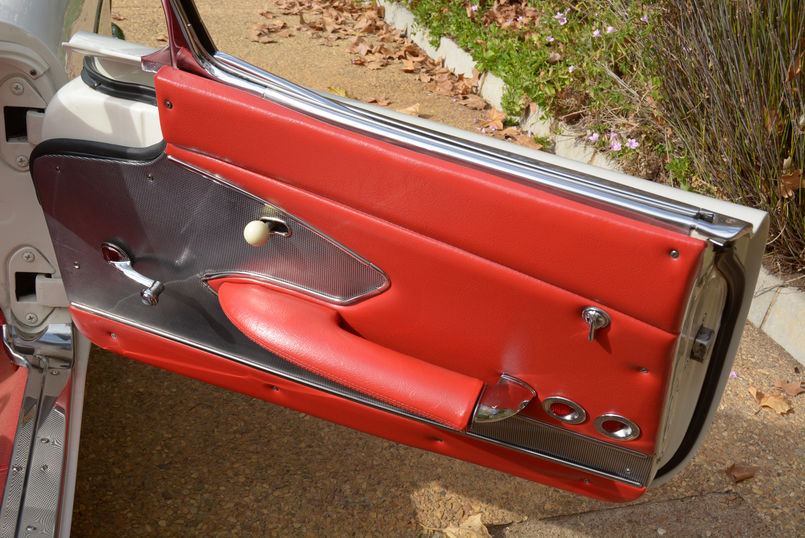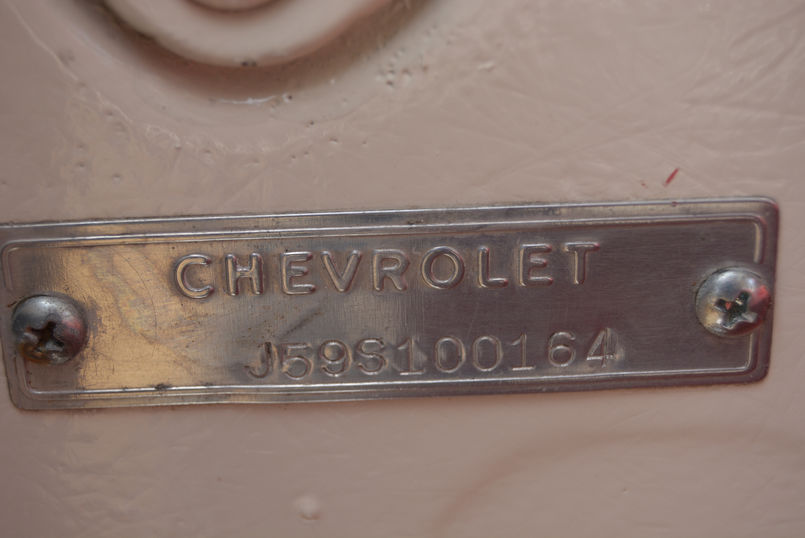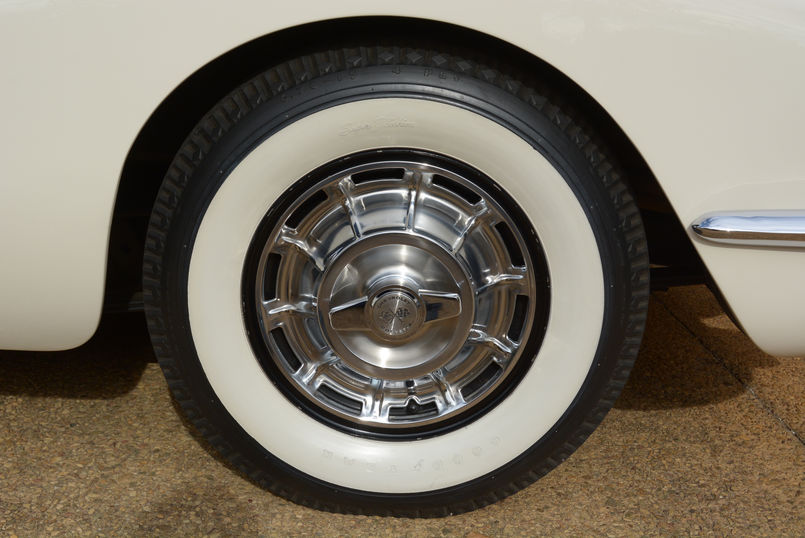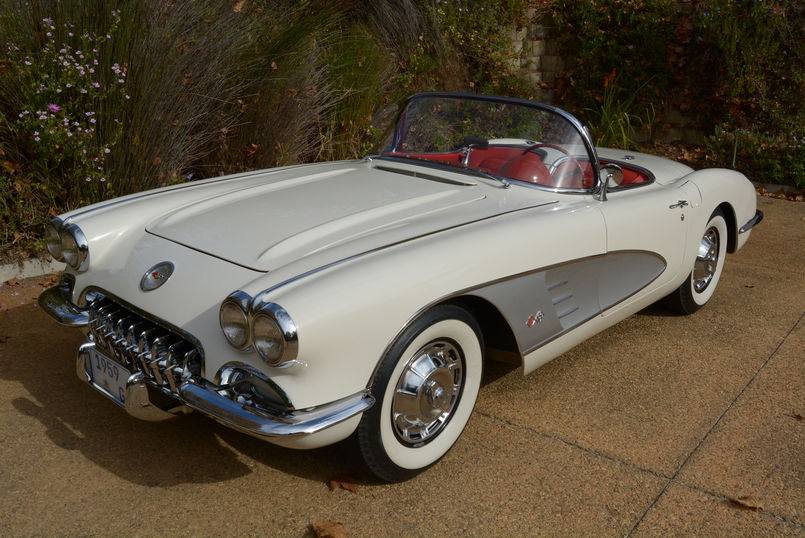
29 Nov Collection in action: Chev Corvette ’59
Mike Monk goes back 60 years to one of America’s most iconic sports cars…
As America steadily grew in affluence in the early post-war period, General Motors capitalised on the situation with an annual auto show called Motorama, “conceived to whet the public’s appetite and boost automobile sales with displays of fancy prototypes, concept vehicles and other special or halo models”. Usually held in conjunction with the New York Auto Show in the January of each year, Motoramas took place from 1949 to 1961 and were said to have been attended by 10,5 million visitors. And it was at the 1953 show that the Corvette concept car was revealed in the Waldorf-Astoria ballroom on January 17, and was met with universal acclaim.
Development began in late 1951 under the direction of renowned GM stylist Harley Earl and was known as Project Opel. There was nothing sophisticated about its specification, which entailed packaging off-the-shelf Chevrolet components into a two-seater body, which for expediency was to be made from a new material called glass-reinforced plastic (GRP). The chassis featured box-section side rails and a strong, central cross-member set low enough to allow the drivetrain to fit above it. GM’s Saginaw recirculating ball steering was adopted along with coil spring suspension up front and semi-elliptic leaf springs at the rear, the latter with outrigger mountings. The parts bin route did, however, mean the adoption of the trusty but far-from-sporty 235 ci (3 851 cm3) Stovebolt 6 ohv engine but upgraded with a high-lift cam, hydraulic lifters and triple Carter side-draught carburettors, helping the now-called Blue Flame 6 to produce 150 hp (112 kW) at 4 500 r/min and 223 lb.ft (302 N.m) of torque. Space precluded fitting GM’s three-speed manual gearbox, so a two-speed Powerglide was the transmission choice.
The EX-122 prototype was called Corvette, apparently at the suggestion of assistant director for the Public Relations department, Myron Scott: the name denotes a fast naval escort vessel and submarine hunter. And such was the public reaction to its Motorama reveal, six months later the Corvette (code C1) went into production in Flint, Michigan. Caution was the watchword: only 50 cars per month were scheduled, all finished in Polar White with Sportsman Red interior, whitewall tyres and a black hood.
For 1954 production was moved to St Louis, Missouri. Minor running changes were made during the year including a 5 hp power increase, and there were now four official body colour options. Pricing was a problem and the story goes that Chevrolet reduced the base price for 1954, but made the Powerglide a ‘mandatory option’ (there was still no manual available) along with other necessities that were listed as options, resulting in a reasonably-specced car that cost the same as a ’53… The trick did not fool customers, either, and the Corvette’s future looked to be in the balance.
But then two important happenings took place. Chevrolet chief engineer Ed Cole introduced the small-block V8, which would provide the answer to the Corvette’s dull performance, just as fellow engineer Zora Arkus-Duntov made some simple changes to the car’s underpinnings to improve its handling. The transformation was timeous: now with a 265 ci (4 342 cm3) V8 giving 195 hp (145 kW) under the bonnet, the Corvette had some go to match the show – and was better able to compete with Ford’s newly-introduced Thunderbird V8, which had stimulated the two-seater market. A spin-off effect of the V8 was that it was lighter than the six, so the car’s front-rear weight distribution improved to 52:48. And electrics were changed from six- to 12-volt.
For the 1956 model year, the styling was smoothed out to include a more conventional headlight mounting, tidier rear fenders and the addition of a ‘hollowed-out’ section of the body sides, dubbed coves, extending from the front wheelarches. The thickness of the body panels made slightly thinner, roll-up windows and lockable doors were adopted, and a three-speed manual became the standard transmission. Hubcaps with dummy knock-off spinners became a feature. With a single four-barrel carburettor, the V8 now offered 210 hp (156 kW) at 5 200 r/min. Optional twin carbs, hotter cams and higher compression ratios offered increased power. The Corvette was maturing, and sales began to improve dramatically.
The ’57 model year Corvette was little changed, but the V8 was stretched to 283 ci (4 637 cm3). Variations through the year were single four-barrel (220 hp), twin four-barrel (245 hp) and Ramjet fuel injection (250 hp) with either a three- or (new) four-speed manual or Powerglide automatic, then, later, twin four-barrel (270 hp) and Ramjet (283 hp) with either of the manual ’boxes. Helped by increasing racing and record breaking successes, the Corvette was, at last, earning its star-spangled stripes.
So, to 1958 and the beginning of the quad-lamp era. The bodywork was given a not particularly well-received adornment of chrome appendages and fake air scoops. The grille’s vertical bars were reduced from 13 to nine, and the bumpers were now attached to the chassis instead of the body. However, the dashboard layout was improved with instruments now clustered together and the addition of a passenger-side grab handle and a drop-down centre console. The five V8 engine option outputs ranged from 230 to 290 hp, and despite a kerb mass just exceeding 3 000 lb (1 369 kg) for the first time, the 290 was good enough for 0-96 km/h in 6,6 seconds and a top speed of 206 km/h. Notwithstanding the criticisms, Chevrolet’s advertising stated that “Wherever the World’s best sports cars gather, Corvette does America proud”. Ford’s T-Bird was no longer a two-seater, giving ’Vette a clean run at the market, and despite the country being in a recession, record sales of 9 168 were achieved.
Quick to respond to public opinion, the 1959 Corvette was less flashy and more comfortable. A T-handle lockout was added to the gear lever of the four-speed ’box to prevent accidental engagement of reverse. Other improvements included concave instrument lenses to prevent reflections and the addition of a parcel tray under the passenger grab handle. Most significantly, trailing radius rods were incorporated into the rear suspension to help prevent axle wind-up caused by the more powerful engines. Upgraded brakes and power windows were among the options. “New sleekness, elegance and roadability for America’s only sports car” was Chevrolet’s new claim.
The ’59 Vette featured here is a fabulous example of the C1 quad-lamp models, which lasted until 1962. Finished in Snowcrest White with a red vinyl interior, it resembles the colour combination of the first Corvettes. Its condition is reflected in having won gold in its class at the 2018 Concours SA, and if anything epitomises ‘having the show to match the go’, then this is it. The ‘go’ in this case is provided by the dual four-barrel Carter carburettor V8 option that produces 245 hp (183 kW) at 5 000 r/min and 300 ft.lb at 3 800. This car was sold with a three-speed ’box but was later fitted with a four-speed, its only non-original feature. With this powertrain, contemporary tests give a 0-110 km/h of 7,6 seconds and a top speed of 189 km/h.
It looks and feels big and heavy, a sensation heightened by the deep, rumbling exhaust that gently rocks the car at idle. The gearshift silkily clicks into place, and the pullaway heightens the sense of anticipation. And, boy, does it deliver… Looking through the wraparound windscreen over the wide bonnet, the longer the road and the further the horizon seems makes for cruisin’ contentment that heightens with every passing kilometre, all to the tuneful beat of the motor. Even the twisties are approached with relish, the car’s wide stance and tendency to understeer offering fail-safe driving characteristics, evidence of the early cars’ victorious competition exploits honing the handling. There is enough oomph to make the tail step out of line, but there is really no need to act the hooligan in a car as pristine as this. Rather dream of tuning in to some Beach Boys music on the self-seeking radio and go on safari – a Surfin’ Safari…
Despite the after effects of the recession, sales of the ’59 ’Vette rose to 9 670 units. The C1 Corvettes paved the way for six more successful generations, and with a mid-engined C8 due next year, the future of Chevrolet’s halo sports car – America’s sports car – looks ever brighter.
Cocooned in a cosy cockpit with effortless power underfoot, well-weighted steering, safe and predictable handling and that boulevard ride, this ’Vette offers a special kind of motoring sensation, a classic American sports car that conjures up images of blue skies, the Pacific Coast Highway, Elvis Presley and the time when post-war ‘baby boomers’ came of age.
